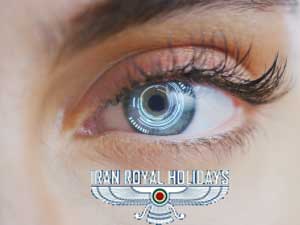Treatment of diabetic retinopathy in Iran
As diabetes progresses in the body, high blood sugar causes changes in very small retinal blood vessels, resulting in bleeding. Diabetic retinoplasty is a diabetic lesion of the light-sensitive retina behind the eye. According to research, laser treatment for macular degeneration reduces vision loss by up to 15% over a 3-year period.

Diabetes control
Because controlling diabetes in the early stages can prevent the development of vision problems, having diabetes is the most important part of treatment. Controlling diabetes at a more advanced stage can also prevent the condition from getting worse.
Treatment
Special treatment is necessary because diabetic retinopathy is at an advanced stage and there is a risk of vision loss. It should be noted that control of diabetes is essential at all stages of the disease.
The main treatments for diabetic retinopathy that threaten your vision are laser treatment, eye injections, and eye surgery.
The goal of laser treatment is to treat the growth of new blood vessels behind the eyes (retina).
In this method, you will be given local anesthetic drops to numb your eyes. You will also be given special lenses and eye drops to enlarge your pupils.
The treatment involves shining laser light into your eyes, and usually lasts up to 40 minutes.
Hyper sensitivity to light and mild pain after normal treatment. It is necessary to use painkillers and sunglasses for relief.
It should be noted that this treatment prevents the weakening of vision, although it does not improve it.
The goal of ocular injection is to treat severe diabetic maculopathy that threatens vision. In this treatment, a special drug is injected directly into the eyes to prevent the formation of new blood vessels behind the eyes.
For this treatment, the skin around the eyes is cleansed and then covered. You will be given anesthetic drops to numb your eyes. Then, your surgeon carefully inserts a very fine needle into your eyeball. It should be noted that these injections are usually repeated once a month, and are stopped once a year once vision is established.
Itching is normal, bleeding inside the eyes, watery eyes or itching in the eyes and a feeling of a foreign body in the eye are normal.
Eye surgery is performed to remove blood or scar tissue in cases of advanced retinopathy for which laser treatment is not possible.
This type of treatment may be needed in the following cases:
- If you have a lot of blood in your eyes.
- There is a lot of scar tissue in the eye that has caused or will cause retinal detachment.
Surgery is usually performed under local anesthesia. The surgeon makes thin incisions in the eye before removing the scar tissue, and removing part of the vitreous and laser treatment to prevent your eyesight from deteriorating.
Blurred vision is normal after surgery. You may need to cover your eyes with a blindfold for a few days after surgery. It should also be noted that activities such as reading and watching TV and in general activities that easily tire the eye are not allowed.
Eyelid surgery in Iran (blepharoplasty)
Eyes are considered as the most prominent feature of facial beauty.
However, some factors, such as aging and heredity, make the eyes look old and not very attractive. As a result, drooping eyelids not only make you look older, but also impair your vision.
Fortunately, thousands of people choose eyelid surgery, or blepharoplasty, to improve their appearance and eliminate potential problems with drooping eyelids.
Eyelid surgery basically treats the following:
- Puffiness under the eyes
- Drooping of the lower eyelids
- Excess skin and wrinkles on the lower eyelid
- Puffiness and drooping of the upper eyelid
- Bad eyelids
Since blepharoplasty is the fourth most common surgery in Iran, there is no doubt that highly skilled Iranian surgeons will give you the most desirable results. It is worth noting that eyelid surgery does not change the shape of the eyes. However, it makes the eyes look more open, and the sagging skin tightens around the eyes.
Before surgery: To reduce bleeding during surgery, it is recommended that you do not take aspirin before surgery.
Surgery: Eyelid surgery is usually performed under general anesthesia. The surgeon decides on the lower eyelid, upper eyelid, or both eyelids, taking into account the patient’s condition. Your surgeon will place precise marks on your skin to determine the amount of excess skin that needs to be removed. It then makes small thin incisions in the upper or lower eyelids that leave no obvious scars.
To achieve the desired result, it is also recommended to combine eyelid surgery with other cosmetic surgeries such as facelifts or eyebrow lifts.
After surgery: Redness, dry eyes, as well as partial swelling and bruising are perfectly normal. Prescribing eye drops, as well as applying a cold compress can greatly improve the condition. To reduce the risk of infection and swelling, you should also avoid wearing makeup and contact lenses for at least a week after surgery. It should also be noted that the recovery process is short and takes less than 2 weeks.
It is worth mentioning that many Iranians choose eyelid surgery as their destination because of the highly skilled surgeons and also the fact that the cost of eyelid surgery in Iran is very low compared to other countries.

Comments are closed here.